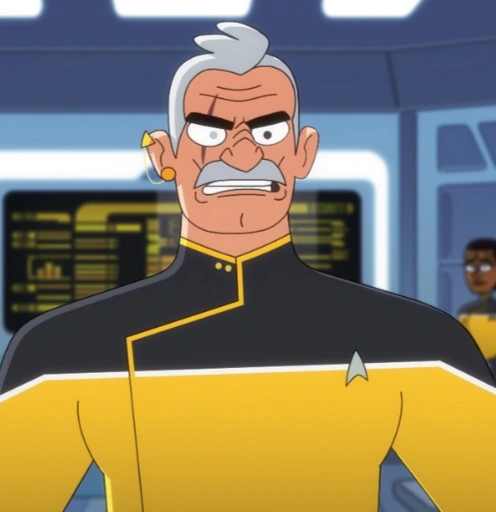That's an interesting real-world note, and I learnt something today! But I have to disagree here -- the D had crash landed and appeared to be a wreck. So it was not just a matter of maintaining her, but of rebuilding her, or near enough.
So this actually came up as well during the production of DS9's battle scenes. Back in the TNG days, Gene Roddenberry had this idea that only 6 Galaxy class starships would be built (with another 6 hull skeletons ready to be built) because of the huge amount of resources building them would take. And indeed, the USS Galaxy's production was supposed to take many years. This is connected to the whole early TNG haziness over "What is the Federation" "What is Starfleet" "How big is everything" that didn't start to get sorted until really TNG Season 5, and not really formalized until it was forced to for the Dominion War in Season 4 / Season 5 of DS9. To put it simply though, 6 Galaxy class ships existing and losing 39 ships at Wolf 359, could have been like 1/4th the fleet as envisioned at that point. The whole, DS9 thing of 300+ Battlegroups came way later, as the war story demanded large fleet action.
So how do you square the two: this idea thatGalaxy's were hard to build and rare (which was consistent in TNG) but showing a lot of them in DS9 being the largest Federation ships in Battlegroups? I believe the Battle of Cardassia had 5 Galaxy class ships?
I think Memory Alpha or Ex Astris did the footwork on this an enumerated all the ships through research, but iirc, the number of featured Galaxy class ships, if you include the ones that showed up in Voyager too, exceeds the 6 original + 6 skeleton = 12 hull count.
The way this was justified in the 1990s by producers is that the Dominion War-era Galaxy class hulls and saucers were mostly empty. Basically they weren't filled with labs or crew quarters or 15 different eating facilities, or crewed by 1000 people. For the purpose of the War, the Federation took the the Galaxy class design, and built a minimum version of it. A ship that travels fast and has all the weapons, power and sensors, but none of the science abilities, and run by a much smaller crew. That way the fleet could have the capitol ships and the shipyards could crank them out. The idea the producers had is that after the war, Starfleet would complete these "barebones" Galaxy class ships.
Applying this to the Enterprise D museum ship, while Geordi has been meticulously restoring it for 20 years, there is similarly no reason to think every aspect of her has been fully internally rebuilt. Do all the areas that were crushed when the saucer landed have replicators, beds, furniture, sonic showers etc? Probably not. If they aren't on the tour, they'd be extras until the ship was up and running and able to do her duties. It seems logical that Geordi would focus on that Dominion War model of getting the "meat and potatoes" Galaxy class up to speed, and then filling in the rest as needed.
And given that the Stardrive is from the USS Syracuse, the rebuilding is actually less than meets the eye. He'll need to do whatever the Syracuse stardrive needs, but the major rebuilding would be largely confined to the damaged section of the lower saucer. After 20 years, Starfleet could readily do that.
These are good questions for producers, but in my head canon, I'm gonna think that this Enterprise D has the commonly traveled areas restored, but if you went to Worf's old quarters or something, there would be either a locked door blocking an unfinished section, or an empty room that would get bunks for a crew in a 60 day emergency reactivation.



